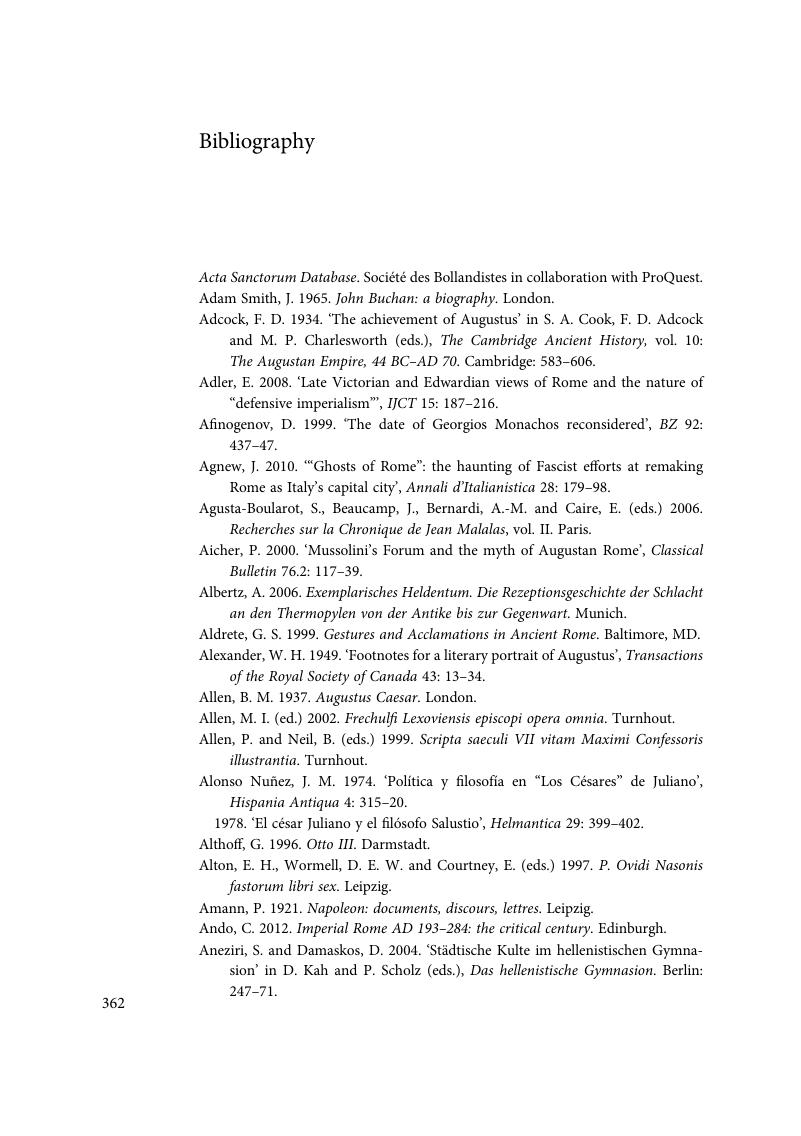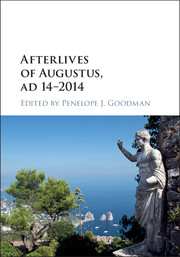Book contents
- Afterlives of Augustus, AD 14–2014
- Afterlives of Augustus, AD 14–2014
- Copyright page
- Dedication
- Contents
- Figures
- Contributors
- Acknowledgements
- Abbreviations
- 1 Best of Emperors or Subtle Tyrant?
- 2 The Last Days of Augustus
- 3 Seneca’s Augustus
- 4 Embodying the Augustan in Suetonius and Beyond
- 5 The First Emperor?
- 6 Julian Augustus on Augustus
- 7 Augustus, the Harbinger of Peace
- 8 The Byzantine Augustus
- 9 Augustus and the Carolingians
- 10 Augustus as Visionary
- 11 From Peacemaker to Tyrant
- 12 Augustus in Morisot’s ‘Book 8’ of the Fasti
- 13 The Proconsul and the Emperor
- 14 In Search of a New Princeps
- 15 Augustus in the Rhetorical Tradition
- 16 The Parthian Arch of Augustus and Its Legacy
- 17 Augustus and the Politics of the Past in Television Documentaries Today
- 18 Augusto Reframed
- 19 Augustus’ (Non)reception in America and Its Context
- Bibliography
- Index
- References
Bibliography
Published online by Cambridge University Press: 19 April 2018
- Afterlives of Augustus, AD 14–2014
- Afterlives of Augustus, AD 14–2014
- Copyright page
- Dedication
- Contents
- Figures
- Contributors
- Acknowledgements
- Abbreviations
- 1 Best of Emperors or Subtle Tyrant?
- 2 The Last Days of Augustus
- 3 Seneca’s Augustus
- 4 Embodying the Augustan in Suetonius and Beyond
- 5 The First Emperor?
- 6 Julian Augustus on Augustus
- 7 Augustus, the Harbinger of Peace
- 8 The Byzantine Augustus
- 9 Augustus and the Carolingians
- 10 Augustus as Visionary
- 11 From Peacemaker to Tyrant
- 12 Augustus in Morisot’s ‘Book 8’ of the Fasti
- 13 The Proconsul and the Emperor
- 14 In Search of a New Princeps
- 15 Augustus in the Rhetorical Tradition
- 16 The Parthian Arch of Augustus and Its Legacy
- 17 Augustus and the Politics of the Past in Television Documentaries Today
- 18 Augusto Reframed
- 19 Augustus’ (Non)reception in America and Its Context
- Bibliography
- Index
- References
Summary

- Type
- Chapter
- Information
- Afterlives of Augustus, AD 14–2014 , pp. 362 - 409Publisher: Cambridge University PressPrint publication year: 2018



